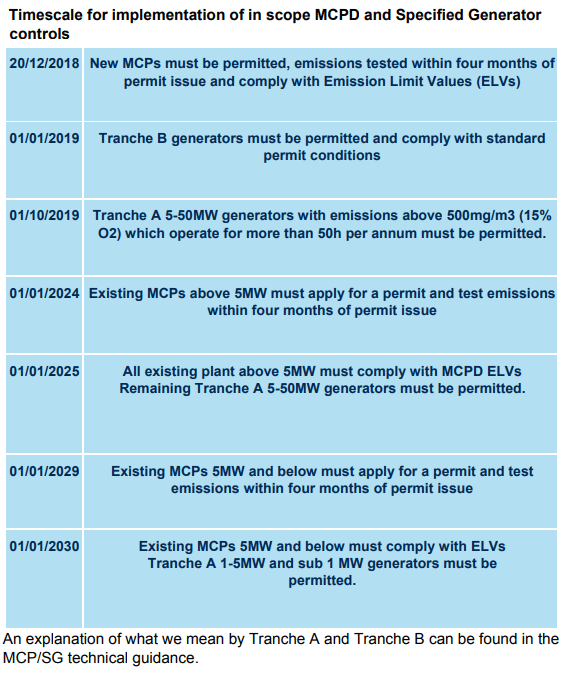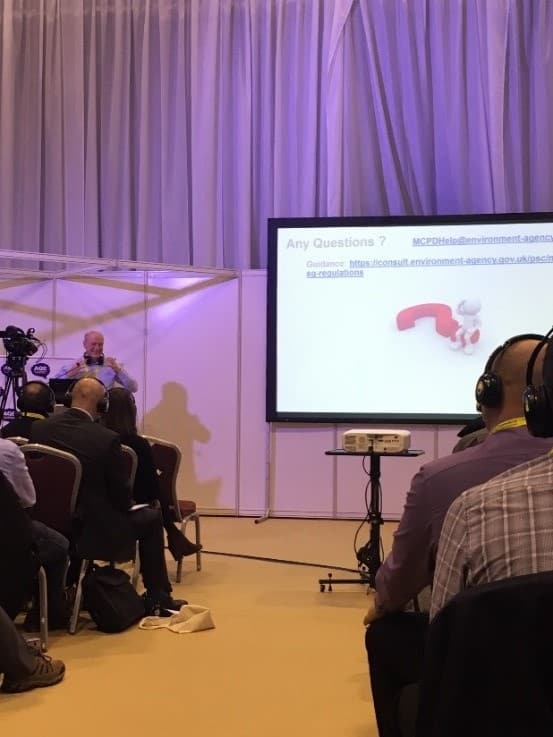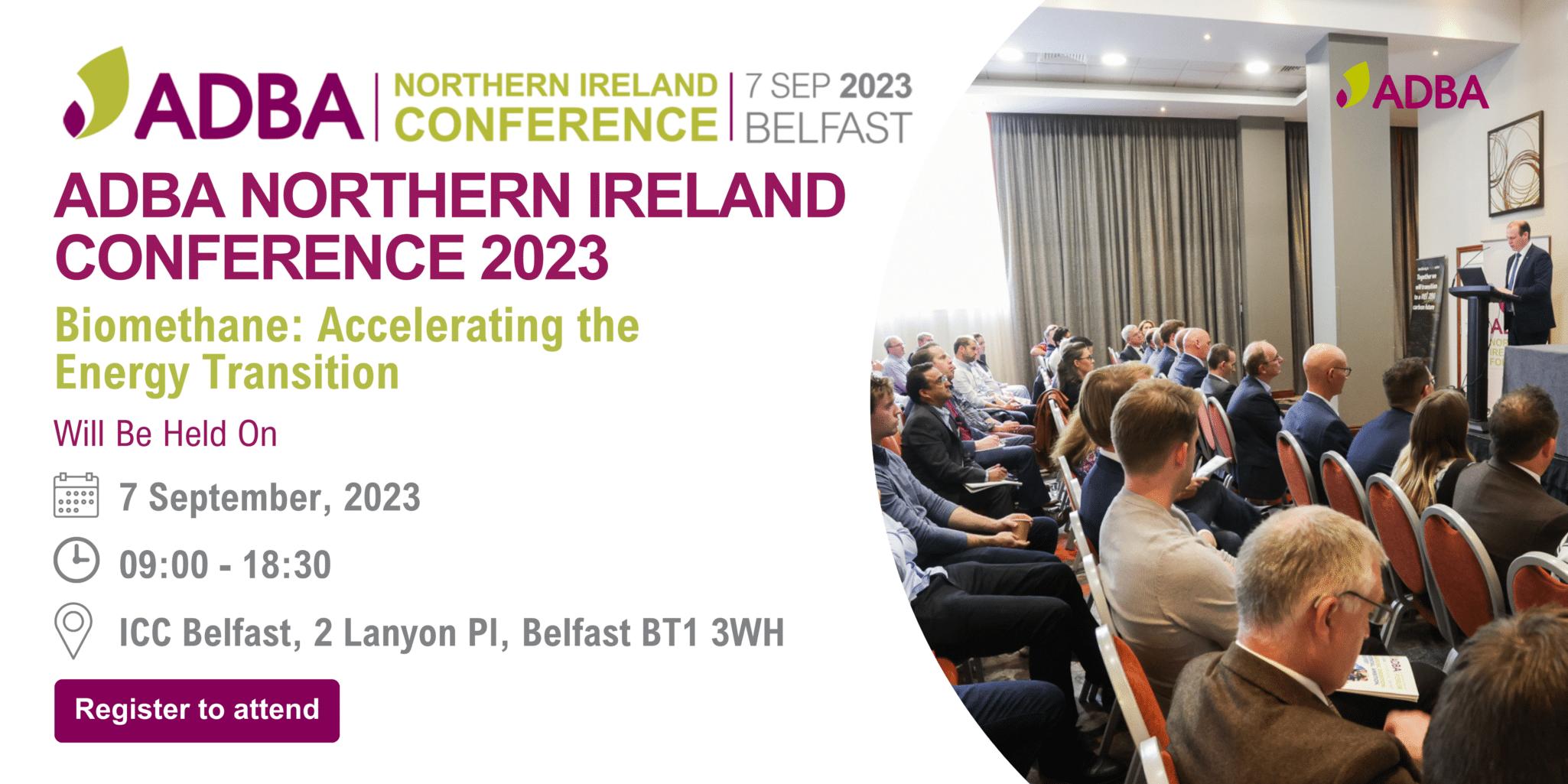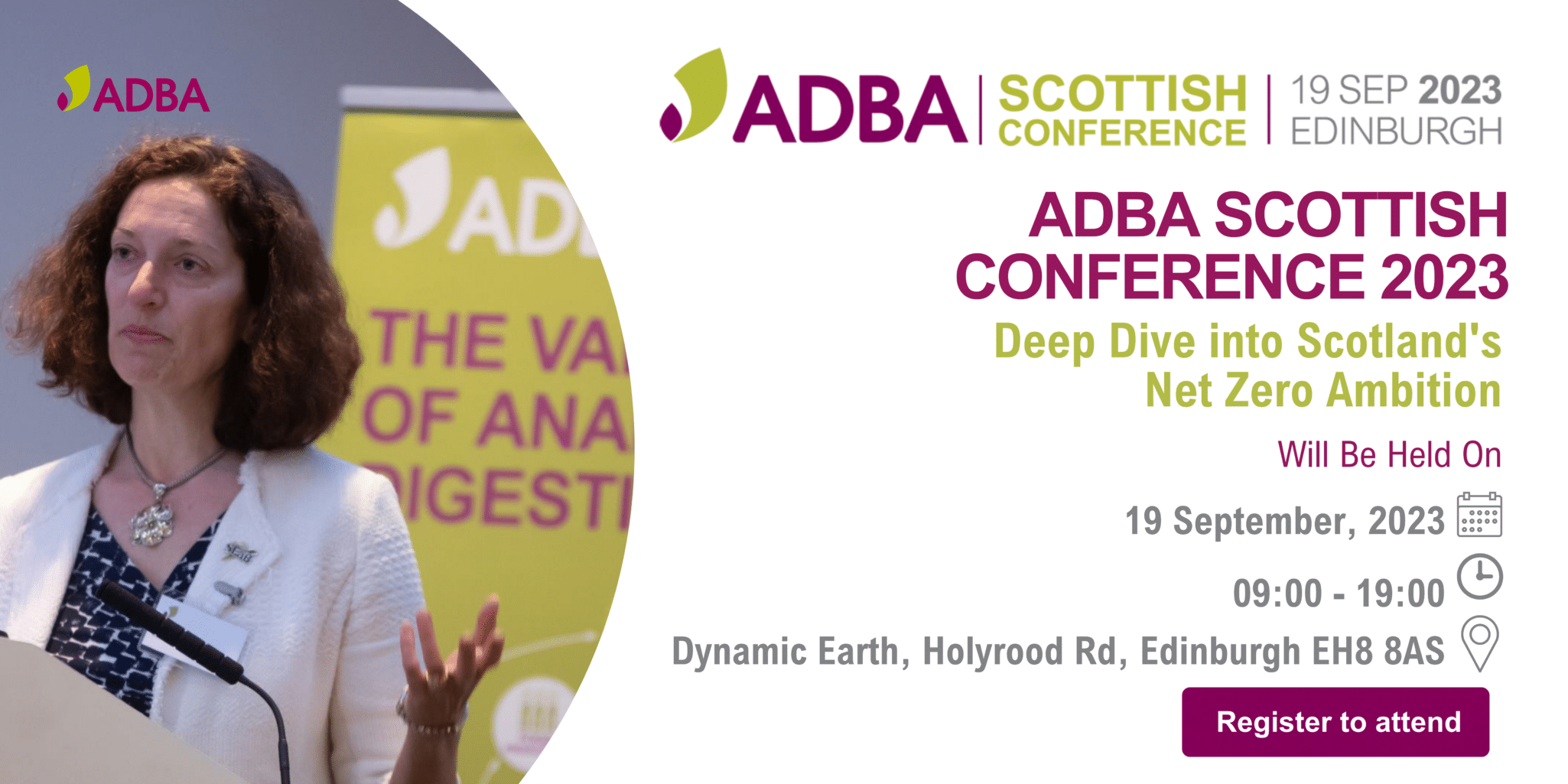Click to expand to full-screen. Click to download the file to your device.
AD operators face new permitting and emissions requirements – top tips for preparing for regulatory
With many sectors about to be affected by the Medium Combustion Plant Directive, Jess Allan (Principal Consultant at WYG and former Environment and Regulation Manager at the Anaerobic Digestion and Bioresources Association) asks whether the AD industry is ready and sets out three top tips for operators.
What is the Medium Combustion Plant Directive?
The Medium Combustion Plant Directive (MCPD) is an EU Directive that entered into force in December 2015 and is now in the process of being implemented in the UK. It regulates emissions of sulphur dioxide (SO2), nitrogen oxides (NOX) and dust into the air, with the aim of reducing emissions and the associated risk to human health and the environment. It also fills an existing regulatory gap at the EU level between large combustion plants (those above 50MWth) and smaller appliances (those below 1MWth).
The Environment Agency (EA) states on its website that:
Medium Combustion Plants and Specified Generators are a major source of air pollutants that may cause harm to human health and the environment. The Medium Combustion Plant Directive (MCPD) sets out rules to control emissions of sulphur dioxide (SO2), nitrogen oxides (NOx) and dust into the air. The Specified Generator regulations also control emission to air, primarily NOx, from generators that would not be captured by the MCPD. Together they seek to protect the environment by securing reductions of these pollutants.
The regulations will apply to combustion plant in a variety of sectors, regardless of fuel type used, including AD, landfill gas utilisation, energy-from-waste and the power sector.
How will it be implemented in the UK?
In the UK, the MCPD will be regulated by the environmental regulators (the EA, Natural Resources Wales, SEPA and Northern Ireland EA), through the existing Environmental Permitting regime that we all know and love! This means that the processes at least will be familiar to many in the waste industry.
Through the introduction of the Medium Combustion Plant Directive (MCPD) and Specified Generator Regulations, new facilities with a rated thermal input between 1MWth and 50MWth are required to obtain an Environmental Permit prior to operation.
Newly installed MCPs put into operation on or after 20th December 2018 will have to operate within the new rules. Existing plant will have a longer transition, the detail of which can be found in the EA’s draft guidance. For initial information, the implementation dates are shown in the figure below, taken from the draft guidance document.

How will the MCPD affect the AD sector?
At AD plants, CHP engines that have a net rated thermal input between 1 and 50 MWth will require a permit to operate and will have emissions limits and monitoring requirements to meet. Many AD plant operators are already operating under an Environmental Permit covering their treatment of wastes such as slurries, manures and food waste, as this is already an activity falling under the permitting regulations. However, currently many AD plants fall outside of the scope of the permitting regulations in England and Wales – specifically, those that only accept and process crops or crop residues. Following the implementation of the MCPD, all operators of medium combustion plant will need to obtain permits to cover the combustion activity regardless of the permitting requirements of the AD process itself.
The simplest permit type is a Standard Rules Permit, and there are a number available covering combustion plant. However these permits have locational conditions which must be met in order for a site to be eligible, for example proximity to sensitive receptors. For those found not to be eligible for an SRP, there are two types of bespoke permit available: low risk and complex. To determine which of these types of bespoke permit is required, applicants will need to refer to the EA’s guidance ‘Emissions from specified generators. Guidance on the dispersion modelling for oxides of nitrogen assessment from specified generators’.
Top tips for getting ready
With newly implemented legislation, there will always be a period of adjustment for both the operator and the regulator, as both parties become accustomed to complying with and enforcing the new requirements. To avoid getting caught out, and to give you some peace of mind, it is advisable to spend some time in advance getting to grips with the legislation and how it might affect you. Even if the legislation does not currently apply to your sites, at least you will be fully informed when going into new projects or when making changes to existing plants.
We have three top tips for any AD operator or developer, as follows.
- 1. Work out if it will apply to your CHP engines.
The first step is to consider whether your facility is within scope. The key factor is the size of the engine. If it has a net rated thermal input between 1 and 50MWth, then the engine is within scope and will likely require some form of permit and have to comply with emission limits and monitoring requirements.
If you’re not sure of the net rated thermal input, ask the manufacturer. Many operators will have ongoing relationships with the engine manufacturer/supplier, so make the most of their expertise.
And what if you have more than one CHP engine at the same site?
The draft guidance states that aggregation will only apply to new MCPs. In this instance where waste gases from two or more separate MCPs discharge through a ‘common windshield’, the combination formed by the plants is considered as a single MCP. The size of the MCP is calculated by adding the capacities of the plant discharging through a common windshield, disregarding any units <1MWth. The EA guidance helpfully notes that a ‘common windshield’ is frequently referred to as a common structure of stack and may contain one or more flues. Operators should not separate discharge points in order to avoid aggregation thresholds.
For specified generators, there is a similar scenario – new generators operating at the same site, by the same operator and for the same purpose, will be grouped to form a ‘specified generator’. In this situation, the permitting date will be the ‘earliest of the ‘relevant dates’’, so be aware of this.
This is a potential area for confusion so it is recommended that you refer to the guidance and check with the regulator if you are unsure.
- 2. Check out the draft permitting guidance.
The EA has made some draft guidance available, which you can find at their website: click here. It is highly recommended that you read through this as it contains the detail of how the MCPD will be implemented and regulated. A key aspect to look at is the transition timescales.
- 3. Ask the experts.
It is always advisable to seek a second opinion from the regulator or an advisor if you are unsure of the regulatory requirements that you may have to comply with.
The EA has a dedicated MCPD help desk, that you can email at: MCPDhelp@environment-agency.gov.uk
WYG’s waste and resource management team has a number of highly experienced consultants who are expert in all aspects of the Environmental Permitting regime. We work closely with our in-house air quality team so are well-equipped to help you plan for the changes and support you through your permit applications. Please do get in touch to have a chat with us.
Insight from the Air Quality and Emissions Show 2018
I recently attended the Air Quality and Emissions Show 2018 in Telford, where the Source Testing Association (STA) ran a conference dedicated to the MCPD. It was apparent that while there is generally industry support for the MCPD in principle, there is some confusion over the requirements, the implementation dates and the detail around monitoring.
Photo: John Henderson (EA) speaks at AQE 2018

The key advice gained from the conference mirrored the tips above and highlighted the importance of speaking to the regulator as early as possible. John Henderson, the EA’s lead on the MCPD, stated that while the EA has been making preparations for an influx of permit applications, they will really value discussions with operators to allow them to establish their intended timescales and plan most effectively. So don’t hesitate to get in touch with your local officer or the MCPD help desk.
There was also discussion around whether operators should carry out some pre-emptive monitoring of emissions from their existing plant. The EA advised that for existing plant it is recommended to take steps to understand whether it will comply with the emission limits. This will give the operator maximum time for replacing or optimising plant, if needed. John reiterated that it is wise to obtain as much information from the manufacturer as possible; if they have been carrying out maintenance checks then you might find that they have more data on record than you are aware of. Accessing this existing data could save you some money and ensure you’re fully informed on your plant performance.
Are you ready?
To sum up, while I believe that there is a general level of awareness of the MCPD in the AD industry, I think there is still room for greater understanding of the detail so that planning and decision-making can be fully informed.
My advice is don’t wait until the last minute; start planning as soon as you can.
Contact
Jessica Allan – Principal Consultant (WYG)
Email: jessica.allan@wyg.com
Phone: 0796 637 2056



